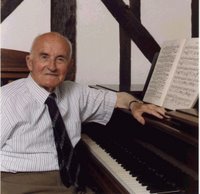Nashville Symphony Showcases Yo-Yo Ma & Don Quixote in New Hall
Two years ago, when the Nashville Symphony opened the doors of its Schermerhorn Symphony Center, named after its late (11/20/29-4/18/05), long-time music director, Maestro Kenneth Schermerhorn, reviewers raved about the traditional shoebox design of its concert hall, With only 1,844 seats and wood everywhere, the new hall was modeled after Vienna’s Musikverein and Boston’s Symphony Hall.
Critics gushed over the fact that here, finally, was a modern concert hall that prized acoustics over profits. After the gala opening concerts, media reps virtually unanimously praised the quality of the sound and forecast an exciting new era for the orchestra.
After all the public ‘hoopla.’ I wanted to see and hear the Schermerhorn Center for myself. My visit in mid-October coincided with some of the first concerts led by the Nashville Symphony’s music director designate, Nicaraguan-born Giancarlo Guerrero.
Fine Dining, Architectural Delights & Great Music Combo Tough to Beat
 My introduction to the the Schermerhorn Symphony Center complex was through its excellent restaurant, Arpeggio, located in the East Lobby. On performance nights the restaurant serves up a four-course buffet in a fine dining atmosphere. Arpeggio’s design is traditional with marble and granite floors and silver light fixtures. On the walls are black and white photographs of great musicians - classical, jazz and country. Nashville is, after all, home of the Grand Ole Opry. For music-lovers who don’t want to pay a $38 flat rate for dinner, there is a Café in the West Lobby offering more casual fare. There is also a courtyard patio which seems an ideal place to relax before concerts or at intermission.
My introduction to the the Schermerhorn Symphony Center complex was through its excellent restaurant, Arpeggio, located in the East Lobby. On performance nights the restaurant serves up a four-course buffet in a fine dining atmosphere. Arpeggio’s design is traditional with marble and granite floors and silver light fixtures. On the walls are black and white photographs of great musicians - classical, jazz and country. Nashville is, after all, home of the Grand Ole Opry. For music-lovers who don’t want to pay a $38 flat rate for dinner, there is a Café in the West Lobby offering more casual fare. There is also a courtyard patio which seems an ideal place to relax before concerts or at intermission.Once inside the hall, one is struck by the European feel of the place with shallow boxes on tiers all around the hall, a very high ceiling with windows letting in natural light and light brown wood for the seats and floors. Chandeliers hang from the grey ceiling and 3,568 organ pipes face the audience. There is specially commissioned statuary inside and out and numerous touches in the art work celebrating Tennessee and some of its best-known residents. There is also a state of the art mechanical system which allows the ground floor seats to disappear and be replaced by a bare hardwood floor suitable for tables.
Maestro Guerrero’s Eclectic Programming Fresh & Challenging
The evening’s program was an eclectic one, to say the least. It began with Night Music: Voice in the Leaves composed in 2000 by Uzbek composer Dmitri Yanov-Yanovsky. Then came the Percussion Concerto written in 1998 by Chinese composer Chen Yi. After intermission we heard Richard Strauss’ Don Quixote.
 Yo-Yo Ma was featured in the Yanov-Yanovsky and Strauss pieces and percussion virtuoso Joseph Gramley was soloist in both the Yanov-Yanovsky and the Chen Yi.
Yo-Yo Ma was featured in the Yanov-Yanovsky and Strauss pieces and percussion virtuoso Joseph Gramley was soloist in both the Yanov-Yanovsky and the Chen Yi.This concert was a heavy duty workout for soloists, orchestra and conductor – and for the audience too. Guerrero has a reputation for championing contemporary music in previous assignments with the Minnesota Orchestra (Associate Conductor) and the Eugene Symphony in Oregon. But it’s too soon to tell whether this kind of challenging program will be typical of his tenure in Nashville.
Night Music is actually a chamber work and was composed for Yo-Yo Ma and his Silk Road Ensemble. It is a mostly quiet piece that explores the most subtle of textures. Towards the end of the piece, the eight instrumentalists blend with taped voices singing an Uzbek lullaby. It is atmospheric music, but I felt its effects were lost in such a large space.
Chen Yi’s Percussion Concerto makes use of the whole orchestra and a vast array of percussion instruments from East and West. Joseph Gramley was phenomenal in his virtuoso mastery of all these instruments and Guerrero and his orchestra navigated the complex rhythms with great skill. An added feature of the piece is a recitation of Chinese poetry, intended by the composer to be done by the percussion soloist. Perhaps Gramley’s Mandarin was not up to the task. In any case, in this performance we heard Mingzhe Wang intoning the words in what is described as “exaggerated Chinese operatic style.” This aspect of the piece was fresh and hypnotic. Overall, Chen Yi has written a very ambitious and largely successful hybrid piece that the audience found exciting to watch and to hear.
Schermerhorn Acoustics Help Bring Don Quixote to Life, But…
Don Quixote usually features the principal cellist of the performing orchestra. It is not really a cello concerto, but rather uses the cello in a concertante role to depict the hapless Don Quixote. Other instruments in the orchestra – most notably solo viola, tenor tuba and bass clarinet play the role of his companion, Sancho Panza. Musically, the piece is a theme and ten variations with each variation depicting a different scene in Cervantes’ novel. The Nashville Symphony made excellent use of the screen intended for surtitles in opera performances, by projecting a short description of what happens during each episode as it occurs. This is especially valuable since the variations often flow into each other.
Yo-Yo Ma is one of the world’s great cellists and he is also a very physical player. Don Quixote gave him endless opportunities to play an unforgettable character and to act out his misadventures. ‘The Ride Through the Air’ was particularly vivid as Yo-Yo Ma appeared on the verge of doing exactly that as he swayed from side to side and the wind machine behind him rose to a crescendo.
Again, Guerrero showed fine control of his orchestra and brought out details that are often obscured. The horn section played brilliantly throughout and the unnamed tenor tuba player was wonderful. Another excellent idea in this performance: the tenor tuba player was seated on the opposite side of the stage from the bass tuba, horns and trombones, thus highlighting his special solo role in this piece.
Musically Speaking, Quixote’s Death is a Disaster!
I enjoyed this Don Quixote immensely and due credit must be given to the hall for contributing so much to the overall effect; I was dismayed, however, by how difficult it was to hear the solo strings, and Yo-Yo Ma’s solo cello. I was sitting in row S, toward the rear of the ground floor, but the sound from the stage should surely be at least audible from every row. Most disappointing of all was the inaudibility of the famous glissando in the final variation, signaling the death of Don Quixote. I saw it, but heard no sound at all.
After just one concert, my impressions of the hall must be provisional, but its strengths and weaknesses are already apparent. I heard a lot of detail within the orchestra, and Gramley’s percussion playing was vivid and exciting, but I did not notice a strong double bass foundation in the orchestra, I had to strain to hear solo string playing, and the timpani playing was sometimes inaudible or muted. I began to think that for whatever reason, this hall suffers from the lack of an orchestral shell. Much of the sound seems to go straight up instead of out. I also wondered why the trumpets and trombones were the only instruments on risers. In this hall I think they would blend better if they too were on stage level.
The Schermerhorn Symphony Center is a gracious and distinguished addition to downtown Nashville and the NSO and its new conductor are giving intriguing concerts, but I am not convinced the sound in the hall is nearly as good as some have made it out to be. I was vastly more impressed with what I had heard two nights earlier at the Kennedy Center in Washington.
Nashville Symphony Recordings with Slatkin Worth a Listen!
The Nashville Symphony is making regular recordings for Naxos and those I have heard are very good. The latest features music advisor Leonard Slatkin leading the NSO in a fascinating version of Mussorgsky’s Pictures at an Exhibition. Instead of the usual Ravel orchestration, Slatkin has put together a version which features a different orchestration for each episode. Among the fifteen different composers represented are Stokowski, Ashkenazy, Gorchakov, Wood, and Gamley. Gamley’s “Great Gate of Kiev” even makes use of a chorus. The album also includes a bizarre arrangement of the Star-Spangled Banner by Rob Mathes and a phenomenal performance of Liszt’s Piano Concerto No. 1 featuring fourteen-year-old Chinese pianist Peng Peng.
Paul E. Robinson is the author of Herbert von Karajan: the Maestro as Superstar and Sir Georg Solti: his Life and Music, both available at http://www.amazon.com/. For more about Paul E. Robinson please visit his website at http://www.theartoftheconductor.com/.
Blog Photos by Marita






